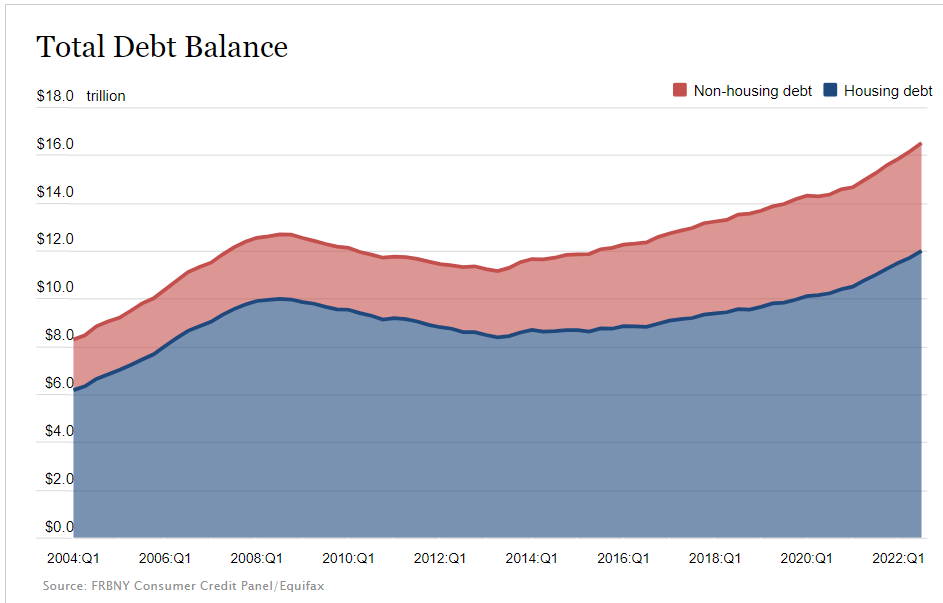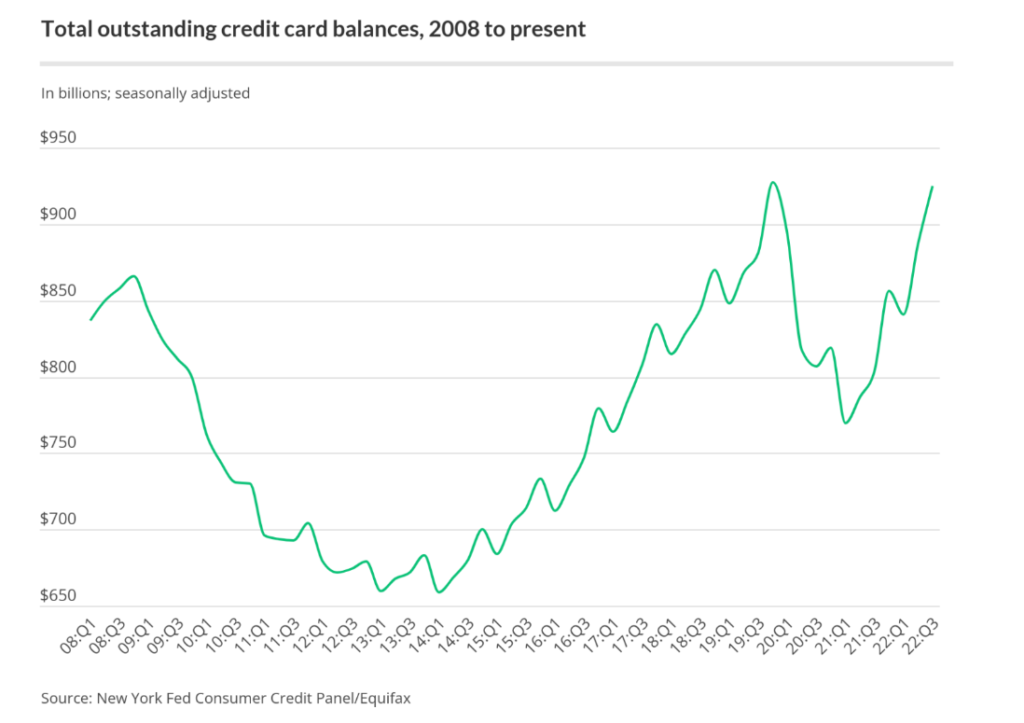Key Takeaways:
- Credit card debt has reached record highs in the United States
- Amid growing inflation, more Americans are relying on credits to pay bills
- Outstanding credit balance among US citizens has spiked in recent years

YEREVAN (CoinChapter.com) — US citizens are drowning in credit card debt. Faced with interest rates at 20%, most people are finding it increasingly harder to repay their dues. According to reports, US credit card debt in 2023 reached an all-time high, touching $960.6 billion. This marks an over 18% hike from last year.

Why are so many Americans in credit card debt?
Thanks to the growing inflation in the country, US households have found themselves unable to cover their daily expenses. The cost of living in the country has spiked by over 8%, while over 45% of Americans have not received enough pay hikes to cover the difference. Joblessness also spiked, with the number of Americans requesting unemployment benefits reaching record numbers in mid-2022.
Several US-based giants, including Google, Amazon, Disney, Meta, Twitter, and Coinbase announced massive layoffs, adding to the US unemployment figures.
Total household debt in the US rose by $351 billion, or 2.2%, to reach $16.51 trillion in the third quarter of 2022, according to the latest Quarterly Report on Household Debt and Credit.

Unable to keep up with daily expenses, more Americans have turned to credit cards to buy everyday necessities. However, without a steady income, and with price hikes across the board, only a few of them manage to repay each month.
According to recent studies, the economic situation in the United States is so bad that over 63% of citizens live paycheck to paycheck. With interest rates reaching new highs, thanks to the Federal Reserve’s latest 25 basis point hike, more Americans are piling on debt.
A new survey by consumer financial services company Bankrate revealed that 46% of cardholders carry their credit card balances from month to month. This is a significant increase from the 39% from a year earlier.
Recommended: Beijing threatens retaliation after Biden Administration shoots down Chinese spy balloon
What Is the Average Credit Card Debt in the US?
As per the 2022 report by data analytical firm Experian, the average credit card balance is $5,589. Other firms, such as TransUnion, place the average credit debt for a single person at $5,805.
According to calculations by Bankrate, it would take over 17 years at the cost of over $8000 in interest alone for an average person to repay the debt at nearly 20%. This is considering that they repay at the standard minimum rate towards the average credit card balance.
American personal finance company NerdWallet paints an even darker picture. As per its recent survey, an average US household carries nearly $7,500 in card debt, marking a 29% increase from the previous year.

Banking information provider GOBankingRates revealed that 30% of Americans have between $1,001 and $5,000 in average credit card debt per month. An additional 15% have $5,001 or more in debt.
Moreover, as per the publication, 14 million Americans (about 6%) have more than $10,000 in credit card debt.
In certain states, however, debt is above the national average of $5,589. While in Alaska that figure is $6,787, Connecticut, Maryland, and New Jersey recorded $6,516, $6,276, and $6,428 in average credit card debt respectively.
In 2022, the total credit card debt in the US rose by $38 billion between Q2 and Q3, according to the Federal Reserve Bank of New York.
US credit card debt among students
Although students hold among the lowest average credit card debt in the country per month, they are also usually the group with the lowest income. According to recent surveys, users aged 18-23 have around $2,312 in individual credit card debt. This is nearly 60% lower bellow the national average.
Generation Z, as they are otherwise called, also have fewer credit cards, owing to their low income.

In contrast, Generation X (people aged 40-55 years) have the largest card debt at $7,236. They also hold on average over 3 credit cards per person.
As the US credit card debt increases and families lose their income, more people will find it harder to cope with the bank-breaking interest rates. The Biden Administration has serious problems to solve at home while sending billions to Ukraine.


